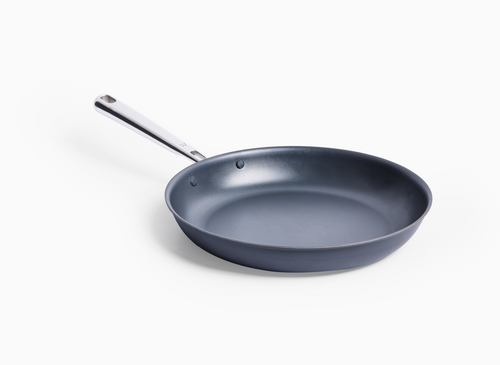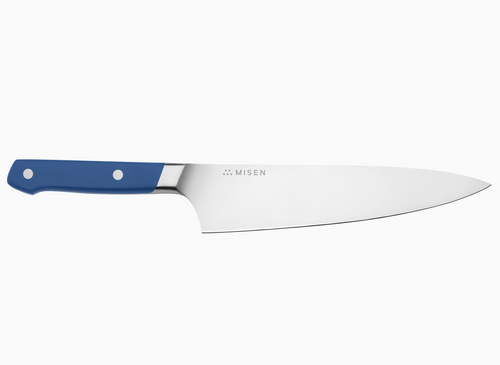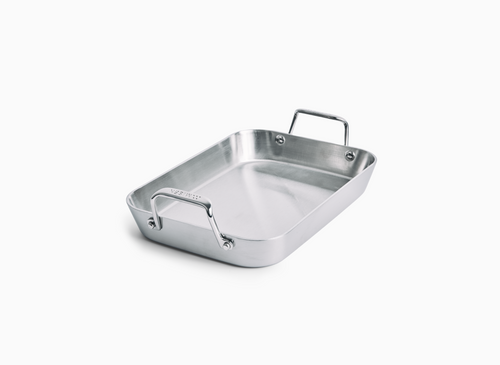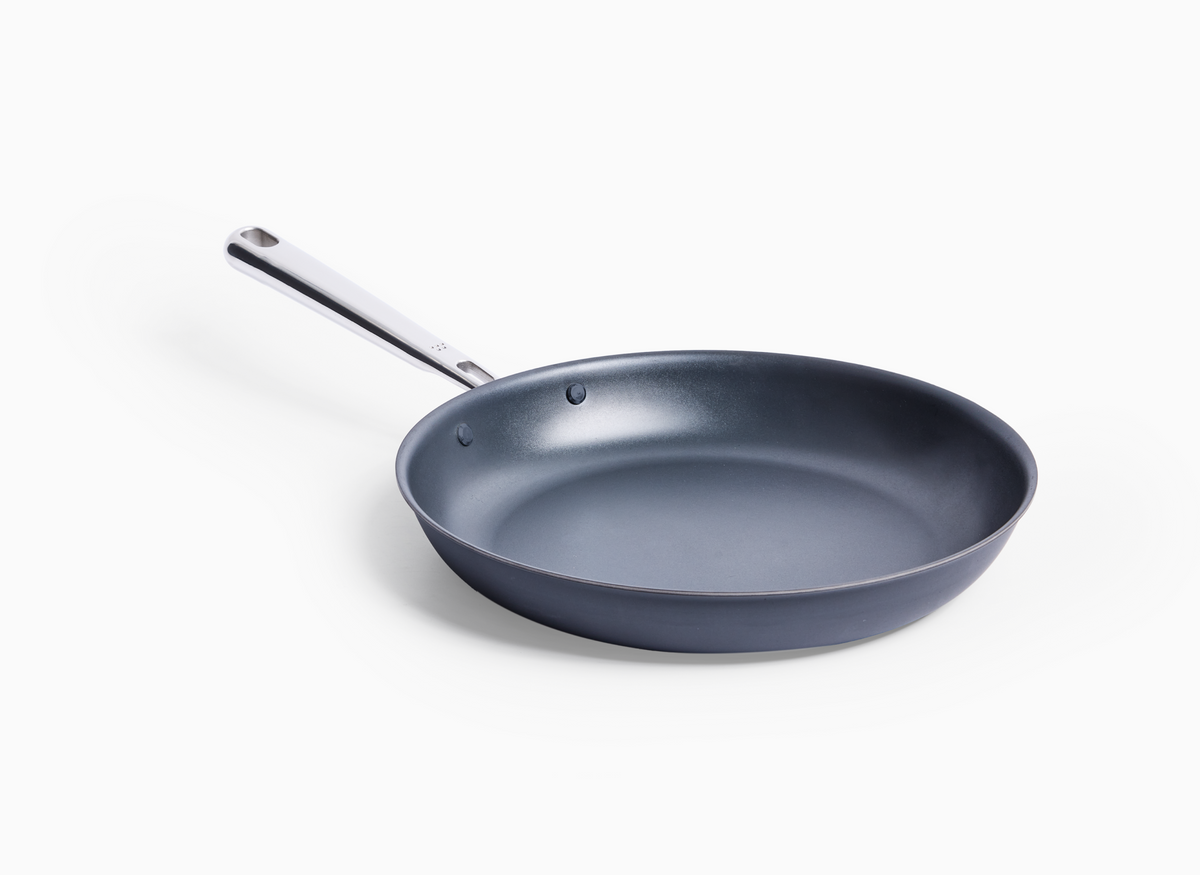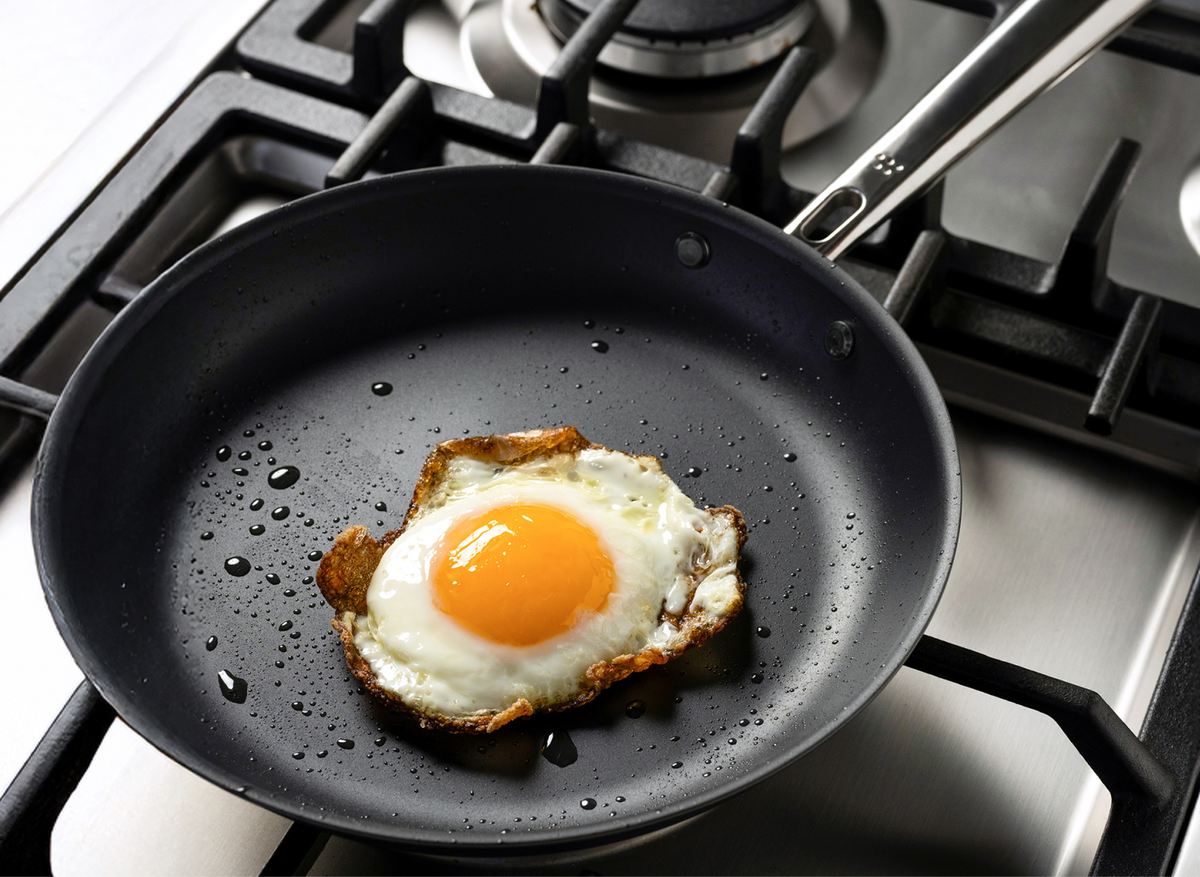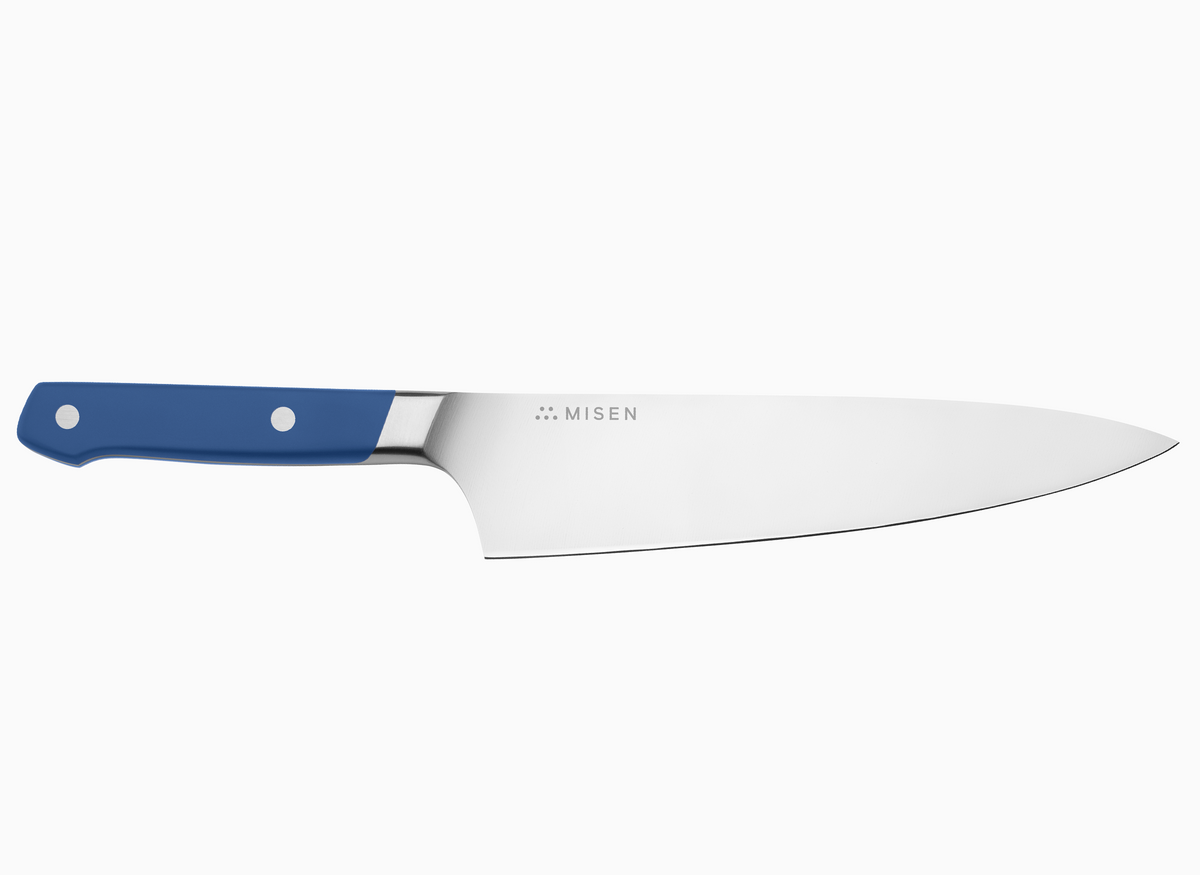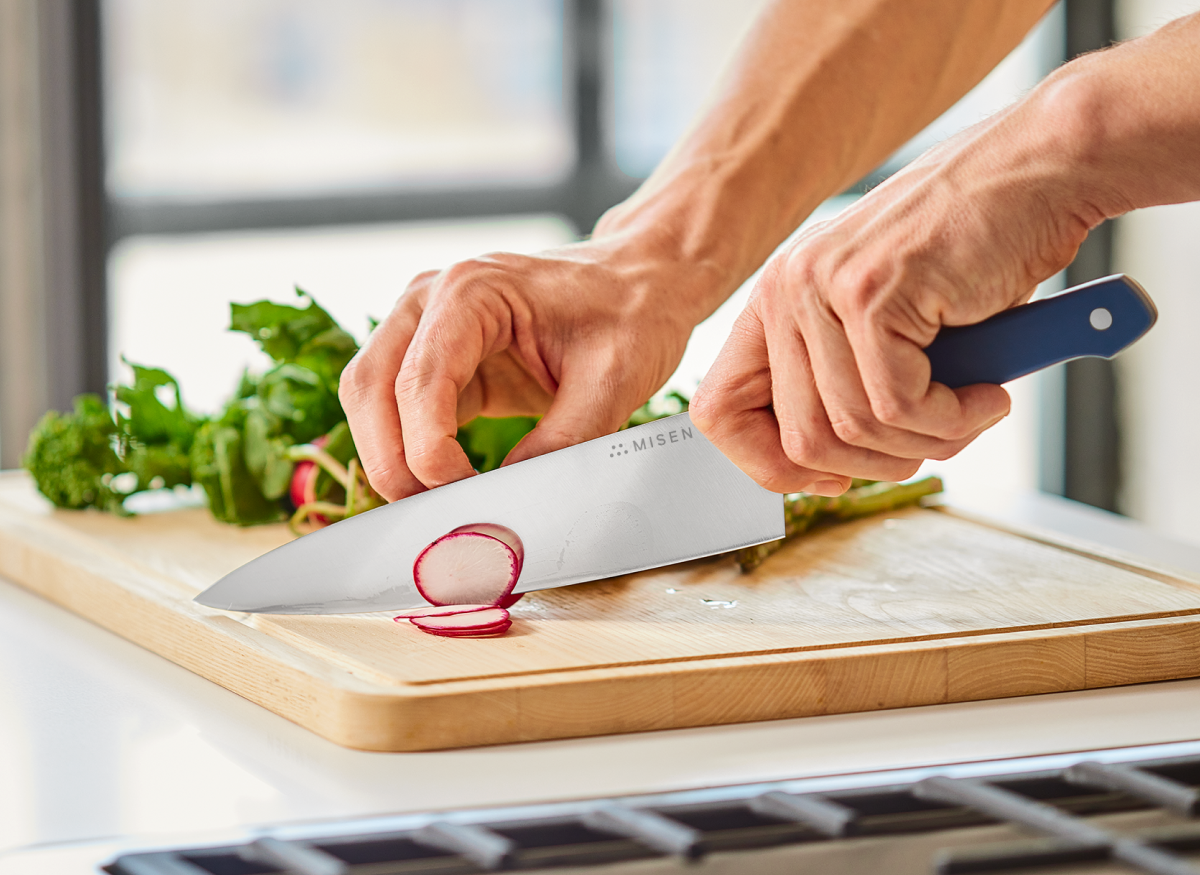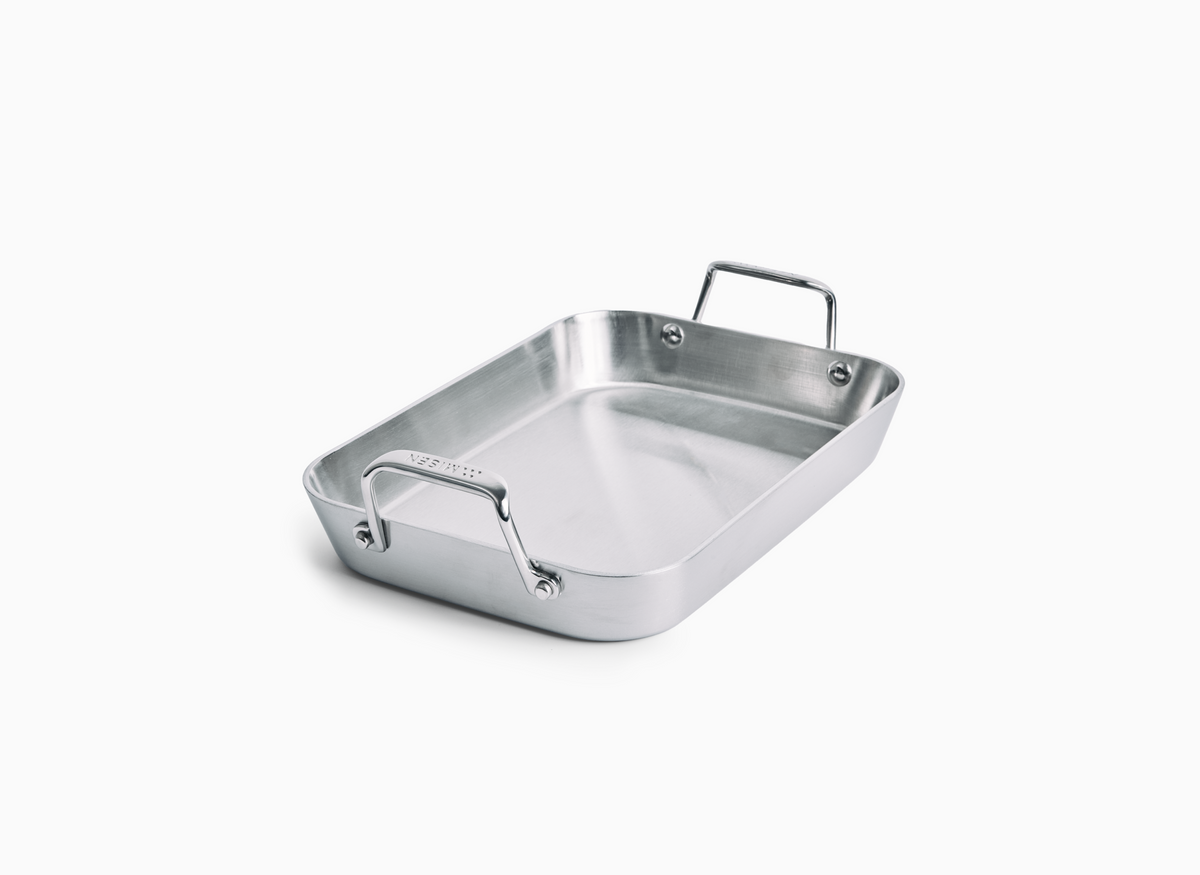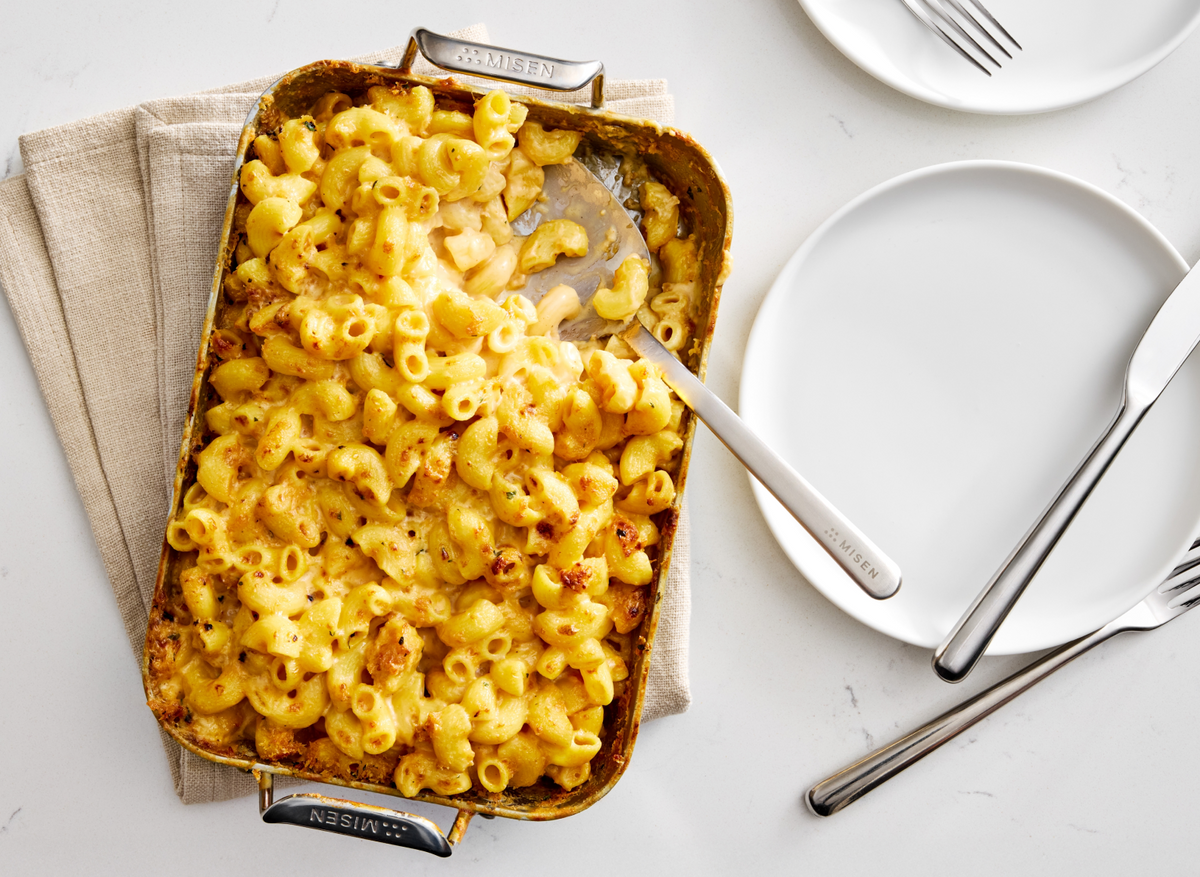Substitute for Heavy Cream: 13 Smart Kitchen Swaps That Actually Work

Running out of heavy cream doesn't have to derail your cooking plans. This comprehensive guide explores multiple substitutes that work for different cooking methods - from the classic milk and butter combination (3/4 cup milk + 1/4 cup melted butter = 1 cup heavy cream substitute) to plant-based alternatives like coconut cream. Whether you're whipping, baking, or making sauces, you'll learn exactly which substitute works best, plus tips for preventing common issues like curdling or separation. Master these swaps and you'll never panic over missing heavy cream again.
Introduction
The Mid-Recipe Panic: When You're Out of Heavy Cream
We've all been there - halfway through making a creamy soup or decadent dessert when you realize there's no heavy cream in the fridge. That moment of kitchen panic happens to the best of us, but here's the thing: it's completely fixable. Heavy cream packs a rich 36-40% milk fat content that creates those velvety textures we love [1]. The good news? You probably already have everything you need for a quick substitute. Just combine 1/4 cup melted butter with 3/4 cup whole milk to make a cup of heavy cream substitute that works great in most recipes [2]. Sure, this emergency fix won't whip into peaks like the real thing, but it delivers the richness and body your recipe needs [1]. Once you know these simple swaps, that mid-recipe panic becomes just another problem you can solve.
What Makes Heavy Cream Essential in Cooking
Heavy cream's 36-40% fat content is what makes it such a kitchen workhorse [3]. That high fat concentration lets it do things lighter dairy products simply can't - you can boil it in sauces without worrying about curdling, whip it into stable peaks for desserts, and count on it to add serious richness to any dish [4]. Think of heavy cream as your secret weapon for thickening soups, enriching sauces, and creating structure in everything from ice cream to frostings [3]. Whether you're deglazing a stainless steel pan after searing meat, turning basic marinara into restaurant-worthy pasta sauce, or whipping up a dessert topping that actually holds its shape - heavy cream handles it all [4].
Why Having Substitute Knowledge Is Your Culinary Safety Net
Knowing how to substitute ingredients is like having a culinary safety net - it turns cooking from a rigid recipe-following exercise into something much more flexible and fun. Being able to adapt on the fly is one of those essential kitchen skills that makes you a more confident cook [5]. Once you understand the basics - how texture, flavor, and cooking times work together - you can make smart swaps that sometimes even improve the original recipe [6]. This skill isn't just about salvaging dinner when you're missing an ingredient. It helps you cook for friends with dietary restrictions, work around allergies, and customize dishes to match what your family actually likes to eat. Master these substitution basics, and you'll cook with more creativity and less stress [7]. Instead of panicking over that missing ingredient, you'll see it as a chance to try something new - and maybe even discover a version you like better.
Understanding Heavy Cream Before Making Substitutions
Heavy cream's 36-40% fat content gives it unique properties that allow whipping, boiling without curdling, and creating rich textures in recipes.
The Science Behind Heavy Cream: Fat Content and Culinary Properties
Heavy cream gets its unique cooking properties from that rich 36-40% fat content. Here's what makes it special: when milk sits undisturbed, the fat naturally rises to the top - that's the cream layer processors skim off before homogenization. This high fat concentration is what allows heavy cream to do things other dairy products simply can't. You can boil it without worrying about curdling (perfect for reducing sauces in your stainless steel pan), whip it into stable peaks that hold their shape, or stir it into hot soups without any separation. The fat acts as a protective barrier that keeps everything smooth and stable, whether you're making whipped cream for dessert or creating a silky pan sauce. Understanding these properties helps you choose the right substitute for your specific cooking needs.
Heavy Cream vs. Whipping Cream: Important Distinctions
Heavy cream and whipping cream differ primarily in their fat content, which directly impacts how they perform in your kitchen. Heavy cream contains at least 36% milkfat, while whipping cream has between 30-36%. This seemingly small difference makes a big impact - heavy cream produces thicker, richer results and holds stiff peaks when whipped, making it ideal for piped frostings and stable whipped toppings. Whipping cream creates lighter, airier textures that don't hold their shape as firmly, working well for soft dollops on desserts like fruit or pie. Both can be used interchangeably in recipes, though the final results will vary - heavy cream delivers more structure and richness to sauces and soups, while whipping cream provides a lighter touch. Quick tip to clear up label confusion: "heavy whipping cream" is actually the same as heavy cream - both have that 36%+ fat content.
When You Might Need a Substitute (Beyond Just Running Out)
Beyond running out mid-recipe, there are plenty of reasons you might need a heavy cream substitute. Dairy allergies and lactose intolerance affect millions, making alternatives essential for inclusive cooking. If you're watching calories or managing health concerns, lower-fat options can help you enjoy creamy dishes without the guilt. Vegan and plant-based diets have also sparked creative alternatives that work beautifully in both sweet and savory applications. Sometimes substitutes even improve the original - coconut cream can add a delicious tropical note to curries and desserts that regular cream can't match. Knowing these alternatives means you're never limited by what's in your fridge or your dietary needs.
How to Evaluate Your Recipe's Needs for the Perfect Swap
Before choosing a heavy cream substitute, take a moment to think about what the cream actually does in your recipe. For whipped toppings, you'll need alternatives that can hold peaks - regular half-and-half won't cut it, but adding melted butter can help build volume. In baked goods, fat content directly impacts moisture and structure, so matching that 36-40% fat level becomes crucial for success. Soups and sauces give you more flexibility since you're mainly after richness and body - even simple cornstarch-thickened milk can work beautifully here. Consider your cooking method too: will the substitute be heated? Some alternatives like cornstarch need heat to thicken properly, while others might curdle at high temperatures. Don't forget about flavor - coconut cream adds its own taste that's perfect for some dishes but might clash with others. By thinking through these factors - whipping needs, fat requirements, cooking temperature, and flavor compatibility - you'll pick the perfect substitute every time.
Dairy-Based Substitutes: Quick Solutions from Your Refrigerator
Combine 3/4 cup milk with 1/4 cup melted butter for a reliable heavy cream substitute that works in most cooked dishes.
Milk and Butter: The Classic Emergency Solution (With Exact Ratios)
You've likely heard about the classic milk and butter substitute (covered in our introduction), but let's talk about making it work perfectly. The key is temperature - that melted butter needs to cool down before you whisk it into your milk, or you'll end up with a separated mess. For precise results, stick to the 3:1 ratio - 3/4 cup milk to 1/4 cup butter creates one cup of substitute.
Here's what actually matters: this combo shines in cooked dishes where everything gets heated together. Think creamy soups, pan sauces, and casseroles where the heat helps everything blend smoothly. Just remember to give it time to simmer and come together - rushing won't help. Skip this substitute for anything that needs whipping, though. No amount of wishful thinking will turn this into fluffy peaks!
Half-and-Half with Butter: When You Need Something Richer
When you've got half-and-half in the fridge, you're already halfway to a great heavy cream substitute. Just add a touch of butter - about 1/8 cup per 7/8 cup of half-and-half - and you've got something richer than the milk-butter combo. The beauty here is that half-and-half already contains some cream, so you're just boosting what's already there.
This substitute works beautifully in your stainless steel pan for making pasta sauces and cream soups. The extra fat from the butter helps prevent curdling when you're cooking at higher temperatures. If you're feeling lazy (we've all been there), plain half-and-half works fine as a 1:1 swap - your dish will just be a bit lighter. But remember, this still won't whip, so save it for cooking rather than dessert toppings.
Evaporated Milk: The Shelf-Stable Savior
That can of evaporated milk sitting in your pantry? It's your secret weapon for cream emergencies. This shelf-stable hero works as a straight 1:1 swap for heavy cream in most cooked dishes. The concentrated milk has already been cooked down, which gives it a slightly caramel-like flavor - sometimes that's a bonus, sometimes not so much.
Where evaporated milk really shines: creamy soups, pasta sauces, and anywhere you need richness without the refrigerator commitment. Just grab the whole-milk version for best results - the low-fat stuff won't give you that creamy texture you're after. Fair warning though: this won't whip, and that subtle caramel note might peek through in delicate dishes. Save it for heartier recipes where its concentrated flavor can blend in nicely.
Yogurt, Sour Cream, and Cream Cheese: Tangy Alternatives That Work
Your refrigerator's tangy crew - yogurt, sour cream, and cream cheese - can step in as surprisingly effective heavy cream substitutes. Each brings its own personality to the party. Greek yogurt mixed with equal parts whole milk creates a protein-packed substitute that's perfect for creamy pasta sauces and soups (just add it off the heat to prevent curdling).
Sour cream brings a welcome tang to both sweet and savory dishes. Try sweetening it with powdered sugar for a quick dessert topping that actually tastes intentional, not like a substitute. Cream cheese is the heavy hitter here - with up to 75% fat content, it'll thicken anything it touches. Just thin it with a splash of milk if you're using it cold, or let it melt right into hot dishes for instant creaminess.
Pro tip: crème fraîche is sour cream's fancy French cousin with more fat, which means it won't break when you heat it. Perfect for when you're making something special and don't want any surprises.
Plant-Based and Non-Dairy Heavy Cream Alternatives
Coconut cream stands out as the most versatile non-dairy option, capable of whipping into stable peaks and working in both sweet and savory dishes.
Coconut Cream: The Most Versatile Non-Dairy Option
Coconut cream stands out as your go-to dairy-free substitute, delivering both versatility and performance. Simply refrigerate a can of full-fat coconut milk overnight, then scoop off the thick cream layer that forms on top - it's that easy. This powerhouse ingredient matches heavy cream's functionality in most recipes, working equally well in your morning coffee or evening curry.
What makes coconut cream particularly useful is its ability to whip into stable peaks (as we covered in the whipping section), plus its naturally rich texture that adds body to sauces and soups. Keep in mind it does add a subtle coconut flavor - great for tropical desserts and Asian-inspired dishes, but something to consider for traditional Italian cream sauces. When cooking with coconut cream, remember it's naturally sweet, so taste as you go and adjust seasonings accordingly.
Nut-Based Creams: Cashew, Almond, and Beyond
Cashew cream delivers the most neutral-tasting plant-based substitute you can make at home. Here's the simple method: soak 1 cup of raw cashews for 4 hours (or quick-soak in boiling water for 10 minutes), drain, then blend with 3/4 cup fresh water and a pinch of salt until silky smooth. The result? A versatile cream that won't compete with your recipe's flavors.
The beauty of cashew cream lies in its adaptability - thin it out for coffee creamer, keep it thick for pasta sauces, or add vanilla and maple syrup for dessert applications. While other nuts work too (almonds create a slightly grainier texture, macadamias are richer), cashews remain the gold standard for their mild taste and smooth consistency.
Store your homemade nut cream in an airtight container for up to a week in the fridge, or freeze in ice cube trays for easy portioning - just re-blend after thawing to restore the smooth texture. For nut-free households, sunflower seeds make an excellent substitute using the same soaking and blending method.
Soy Milk and Oil Combinations: Creating the Perfect Fat Ratio
The classic vegan workaround combines soy milk with oil to match heavy cream's fat content. Mix 2/3 cup soy milk with 1/3 cup oil (olive, vegetable, or canola) to replace 1 cup of heavy cream. This simple formula works brilliantly in cooked dishes where you need richness without dairy.
Choose your oil based on the recipe - olive oil adds flavor that complements Mediterranean dishes, while neutral oils like canola disappear into baked goods and delicate sauces. The key to success? Blend thoroughly. A quick whiz in a blender creates a smooth emulsion that won't separate in your recipe. Just remember this combo won't whip, so save it for cooking and baking rather than topping desserts.
Store-Bought Non-Dairy Creams: Which Ones Actually Perform Well
When homemade isn't an option, several store-bought alternatives deliver reliable results. Look for products specifically labeled as "heavy cream alternatives" rather than just non-dairy milk - these are formulated with higher fat content to mimic cream's performance.
The best performers typically combine coconut oil or other plant fats with proteins from sources like oats, soy, or faba beans. These products often whip successfully and hold up well in both hot and cold applications. Check the ingredient list for stabilizers and emulsifiers - while they sound artificial, they actually help these products behave more like dairy cream in your recipes.
For cooking applications, most plant-based cooking creams work as direct 1:1 substitutes. For whipping, refrigerate overnight and look for brands that specifically mention "whippable" on the package. Remember that flavor profiles vary significantly between brands - some taste remarkably neutral while others have distinct plant-based notes, so you might need to try a few to find your favorite.
Matching Your Substitute to Your Cooking Method
Different cooking methods require different substitutes - whipping needs fat structure, baking needs moisture balance, and sauces need heat stability.
For Soups and Savory Sauces: Substitutes That Won't Break or Curdle
Heat changes everything when it comes to cream substitutes. For soups and sauces cooked in a stainless steel pan, you need substitutes that won't break or curdle under temperature stress. Half-and-half thickened with cornstarch creates exceptional stability - dissolve 1-2 teaspoons of cornstarch per cup in cold liquid first, then whisk it gradually into your hot dish [24]. The cornstarch acts as insurance against separation.
For dairy-free cooking, coconut cream stands out as the most heat-stable option. Unlike lighter alternatives, it maintains its creamy texture even at high temperatures, though expect a subtle coconut note in your finished dish [1]. Evaporated milk offers another foolproof choice - its concentrated proteins resist curdling, making it perfect for creamy soups and pan sauces.
When working with milk-based substitutes, always start with a roux. This butter-flour base creates a protective structure that prevents breaking when you add milk [24]. For finishing touches, try the Greek yogurt-milk blend mentioned in our dairy substitutes section - just remember to remove your pan from heat before stirring it in to preserve that silky texture [1].
For Baking Projects: Options That Maintain Moisture and Structure
Baking demands precision - your substitute needs to deliver the right fat content and moisture balance. For tender scones and moist cakes, the half-and-half plus butter combination (detailed in our dairy substitutes section) maintains the crucial fat levels your recipe needs [16]. Evaporated milk works as a straightforward 1:1 swap, with concentrated proteins that help maintain structure as your baked goods rise [13].
Going dairy-free? The soy milk and oil blend we covered earlier closely matches heavy cream's fat-to-liquid ratio, though you'll miss that characteristic dairy richness [25]. Greek yogurt thinned with milk creates the right consistency for batters and doughs, but skip it for recipes requiring high heat or whipping [16].
Coconut cream shines in baking applications where fat content drives texture. With 20g of fat per half cup, it delivers the richness needed for properly structured cakes and pastries - just embrace the subtle coconut note it brings [13].
For Whipping: Alternatives That Can Hold Peaks
Whipping requires fat structure - and most substitutes simply can't deliver. The exception? Coconut cream. Chill a can overnight, scoop off the solid layer, and whip it just like dairy cream. It holds peaks beautifully, though with that signature coconut flavor [13].
For dairy-based whipping tricks, powdered sugar becomes your secret weapon. The cornstarch it contains stabilizes whipped cream for up to 12 hours - perfect for make-ahead desserts [26]. Want even longer stability? A spoonful of instant pudding mix creates whipped cream that holds for 48 hours while adding complementary flavors [26].
The Greek yogurt-milk blend creates a tangy whipped topping that pairs brilliantly with fruit desserts. While it won't achieve the same billowy peaks as cream, its protein structure maintains shape better than other substitutes [26]. Remember: temperature matters. Keep everything cold - bowl, beaters, and ingredients - for the best whipping results with any substitute.
For Specialty Applications: Ice Cream, Ganache, and Coffee Creamers
Specialty applications demand specific solutions. Ice cream's silky texture depends on fat content - heavy cream's 36-40% creates smoothness, while half-and-half's lower fat produces icier results. Combat this by adding liquid sweeteners like corn syrup, which interfere with ice crystal formation [28].
Ganache presents a different challenge. Whole milk creates a softer set that won't firm up like traditional ganache - perfect for glazes but not for truffles [27]. Coconut cream or evaporated milk work better for firm-setting ganache, though expect subtle flavor differences [27].
For your morning coffee, half-and-half delivers reliable richness without overwhelming your brew. Non-dairy drinkers should reach for coconut cream (embrace the tropical notes) or cashew cream for a more neutral profile [28]. The crucial factor across all these applications? Understanding what each substitute can and can't do, then adjusting your expectations accordingly.
DIY Heavy Cream: Make Your Own in Minutes
Create emergency heavy cream by blending 3/4 cup milk with 1/4 cup melted butter - perfect for cooking but not suitable for whipping.
Two-Ingredient Emergency Heavy Cream Recipe
As we've covered earlier, the classic milk-butter combination creates a reliable heavy cream substitute for cooking and baking. The key to success lies in proper technique: cool your melted butter to room temperature before whisking to prevent separation. This simple step ensures a smooth, unified mixture that performs excellently in cooked dishes like creamy soups and pasta sauces. Remember, this substitute won't whip - save it for recipes where cream adds richness rather than structure.
Creating Homemade Heavy Cream That Can Actually Be Whipped
Creating truly whippable cream at home requires understanding fat science. Keep everything cold - tools, bowls, and ingredients should be refrigerated until use. You'll need at least 30-35% milkfat content for stable peaks to form.
Watch for these whipping stages:
- Soft trails: Lines that slowly disappear
- Soft peaks: Cream clings lightly to your whisk
- Firm peaks: Cream holds its shape with slightly softened tips
Stop at firm peaks to avoid making butter. For best stability, choose heavy cream (36%+ fat) over regular whipping cream. Using quality tools like a powerful mixer helps achieve better results faster.
Storage Guidelines and Shelf Life Expectations
Storage times vary by substitute type:
- Milk-butter mixtures: 24 hours refrigerated
- Coconut cream alternatives: 5-7 days refrigerated, 3 months frozen
- Dairy-based substitutes: Follow original product dates
- Ultra-pasteurized options: Check expiration dates
Discard any substitute showing mold, off odors, or permanent separation. When freezing, expect to re-blend after thawing for best texture.
Troubleshooting Common Issues with Homemade Cream
Quick Troubleshooting Guide
Separation issues? Cool melted butter to room temperature before mixing. For milk-oil combinations, whisk thoroughly before each use.
Won't whip properly? Check temperature - coconut cream needs overnight chilling. Ensure your substitute has enough fat content (30%+ minimum).
Lumpy texture? Heat cornstarch mixtures to 203°F while whisking constantly. For nut creams, soak cashews 4+ hours or quick-boil for 10 minutes.
Grainy results? Blend nut-based creams longer at high speed. Strain through fine mesh if needed.
Remember: proper technique solves most substitute issues. Take your time with temperature control and mixing for best results.
Healthier and Dietary-Conscious Substitutes
Greek yogurt mixed with milk creates a protein-rich, lower-fat substitute that delivers creamy texture with added nutritional benefits.
Lower-Fat Options That Still Deliver on Flavor and Texture
Combining milk with cornstarch creates an effective low-fat, low-calorie substitute that maintains creamy texture. Mix 2 tablespoons of cornstarch into 1 cup of milk, whisking thoroughly to eliminate lumps, then simmer at 203°F while stirring until thickened [13]. For a protein-rich option that reduces fat while adding body, blend equal parts Greek yogurt and whole milk - this works particularly well in sauces and soups, though it's not suitable for baking [1]. Half-and-half with cornstarch offers another reliable lower-fat alternative - mix 1-2 teaspoons of cornstarch per cup of half-and-half, dissolving it first in cold liquid before gradually incorporating it into hot dishes [24]. When using evaporated milk as a lighter substitute, it can replace heavy cream in a 1:1 ratio in baked goods and sauces, while still providing essential moisture and a concentrated protein content that helps maintain structural integrity [1].
Dairy-Free Solutions for Allergies and Intolerances
For those with dairy allergies or intolerances, several reliable alternatives can replicate heavy cream's functionality. Silk Heavy Whipping Cream, made from faba bean protein and coconut oil, serves as a direct 1:1 replacement that maintains the traditional texture without animal products [36]. Silken tofu blended with soy milk creates a protein-rich substitute that works particularly well in soups and sauces, while also accepting vanilla extract and sugar to become a whipped topping for desserts [1]. The combination of soy milk and olive oil (2/3 cup soy milk to 1/3 cup oil) provides a dairy-free alternative that closely mimics heavy cream's fat content and richness, though it won't whip like traditional cream [37]. For recipes requiring a whipped texture, chilled coconut cream offers exceptional versatility - simply refrigerate full-fat coconut milk overnight and scoop off the hardened cream layer for a substitute that can achieve stiff peaks, though it will impart a subtle coconut flavor [36].
Keto and Low-Carb Heavy Cream Alternatives
Heavy cream's high fat content (36-40%) and minimal carbs make it naturally keto-friendly, but several alternatives work well for low-carb diets. Coconut cream serves as an excellent keto substitute, containing 20g fat per 1/2 cup while maintaining just 3g carbs [38]. For dairy-tolerant individuals, combining melted butter with whole milk creates a keto-approved substitute that closely mimics heavy cream's fat ratio [39]. Macadamia nut milk offers another low-carb option - simply soak the nuts for 20 minutes, drain, and blend with water and vanilla to create a thick, creamy mixture suitable for desserts and beverages [38]. When selecting heavy cream or substitutes for keto cooking, focus on quality, particularly with dairy products, since hormones and antibiotics are fat-soluble and keto diets are high in fat [40]. For those tracking macros, each tablespoon of traditional heavy whipping cream contains approximately 0.375g of carbohydrates, making it highly compatible with ketogenic eating patterns [40].
Comparing Nutritional Profiles: Which Substitutes Are Healthiest?
Understanding the nutritional profiles of heavy cream substitutes helps make informed choices for different dietary needs. The classic milk-butter combination closely mimics heavy cream's fat content but adds significant calories, while cornstarch-thickened milk creates a lower-fat, lower-calorie option that maintains creamy texture [1]. For those seeking protein-rich alternatives, silken tofu provides just 55 calories and 4.8g of protein per 100g serving, while blended white beans offer an impressive 19.02g of protein per cup at 299 calories [35]. Coconut cream serves as an excellent keto-friendly substitute with 20g fat per 1/2 cup and only 3g carbs [41]. When comparing dairy options, evaporated milk contains 338 calories per cup versus heavy cream's 809 calories, making it a significantly lighter choice that still provides essential nutrients [35]. Full-fat dairy alternatives like coconut cream and cashew milk maintain similar functional properties to heavy cream while offering unique nutritional benefits - coconut cream provides medium-chain triglycerides, while nut-based options deliver heart-healthy fats and minerals [1].
Conclusion
Master these substitutes and you'll never let missing heavy cream derail your cooking plans again.
Your Complete Heavy Cream Substitute Arsenal at a Glance
You've learned multiple substitute options throughout this guide, from simple milk-butter combinations to plant-based alternatives. Here's your quick reference: dairy-based solutions like the classic 3/4 cup milk with 1/4 cup melted butter work for most cooking needs. Plant-based options include whippable coconut cream and the versatile soy milk-oil blend (2/3 cup to 1/3 cup ratio). For lighter alternatives, try cornstarch-thickened milk or Greek yogurt mixtures. Each substitute serves specific recipe needs - choose based on whether you're whipping, baking, or making sauces (as detailed in earlier sections).
How to Choose the Right Substitute Every Time
Choosing the right substitute is straightforward when you match it to your recipe's needs. As covered in the cooking methods section, consider three key factors: Will you be whipping it? Coconut cream works best. Will it be heated? Choose stable options like evaporated milk or cornstarch mixtures. Does it need to stay dairy-free? Reach for soy milk-oil blends or nut-based creams. The key is understanding what heavy cream does in your specific recipe - whether it's adding richness, creating structure, or providing moisture - then selecting the substitute that best mimics that function. With quality cookware like a stainless steel pan that heats evenly, you'll have even better control when working with these alternatives in sauces and reductions.
The Freedom of Cooking With Confidence (Even Without Heavy Cream)
Mastering substitutions builds the kind of kitchen confidence that makes cooking more enjoyable and less stressful. When you understand how ingredients work - not just follow recipes blindly - you develop real cooking intuition. Each substitution becomes a learning opportunity that strengthens your skills. Maybe your first attempt at using Greek yogurt in a sauce taught you about temperature control, or experimenting with coconut cream revealed new flavor possibilities. These experiences add up, turning you into a more adaptable, confident cook who can handle whatever challenges arise in the kitchen.
Never Let a Missing Ingredient Stop Your Culinary Creativity Again
Never let a missing ingredient derail your cooking plans. With the substitute knowledge you've gained, you're equipped to handle any heavy cream emergency - whether it's a last-minute dinner party dessert or your regular weeknight pasta sauce. Keep this guide handy for quick reference, and remember: the best cooks aren't those who always have every ingredient on hand, but those who know how to adapt and create delicious results regardless. Your kitchen creativity starts with understanding these simple swaps, and with practice, substituting becomes second nature. Happy cooking!
- Consisting of at least 36% milk fat, heavy cream is higher in fat than other cream varieties, including whipping cream, half-and-half, and light cream. - https://www.healthline.com/nutrition/heavy-cream-substitutes
- Melt 1/4 cup unsalted butter (that's 4 tablespoons or half a stick) and let it cool to room temperature. Then, whisk it together with 3/4 cup whole milk. This mixture is equivalent to 1 cup of heavy cream - https://www.thekitchn.com/heavy-cream-substitute-23004405
- Heavy cream is milk fat that collects on top of fresh milk if it hasn't been homogenized... They have decreed that heavy cream can contain 36% to 40% fat - https://www.foodnetwork.com/how-to/packages/food-network-essentials/what-is-heavy-cream-and-what-is-a-heavy-cream-substitute
- After cooking proteins, deglaze your skillet with a little broth and a splash of heavy cream for a fabulous quickie pan sauce. You can also turn your marinara into a silky pasta sauce with just a touch of cream. - https://www.thepioneerwoman.com/food-cooking/cooking-tips-tutorials/a96936/10-ways-to-use-up-heavy-cream/
- The most important skill in the kitchen — and, arguably, life — is adaptability. The list below, which is by no means comprehensive, is meant to help you replace ingredients with confidence. - https://www.nytimes.com/article/substitutes-for-cooking.html
- But by considering texture, flavor and cook time, and making decisions according to taste, you'll greatly expand your options — and may end up with a dish you like even more. - https://cooking.nytimes.com/article/ingredient-substitutions
- Whether due to dietary restrictions, allergies, or simply a lack of certain ingredients in the pantry, being able to substitute one ingredient for another is essential in creating a delicious and satisfying dish. - https://renpho.com/blogs/wellness-fitness-blog/cooking-creatively-a-guide-to-ingredient-substitutions-in-recipes?srsltid=AfmBOoqCfWB5-uD2Wv3Gy5JqgQqhza_11Oqdumkh8vNjjLax1WcViQxA
- Heavy cream is the layer of fat that is skimmed off before whole milk goes through the process of homogenization. It contains about 38 percent fat. It's fatty texture and rich, creamy flavor make it a perfect addition to all kinds of savory and sweet dishes. - https://www.thekitchn.com/whats-the-difference-between-half-and-half-light-cream-whipping-cream-and-heavy-cream-73203
- Fat hates water, but these triglycerides are protected by membranes of phospholipids, special biological molecules that possess hydrophilic (water-loving) and hydrophobic (water-fearing) regions... A prerequisite for effective whipping of the cream is that part of the fat is solid and a space-filling network of mainly long and slender platelets is formed within the fat globules. - https://www.seriouseats.com/the-science-of-whipped-cream-butter-creme-fraiche
- According to the labeling standards of the Food and Drug Administration, heavy cream is a cream with no less than 36% milk fat. It may also be called heavy whipping cream. In contrast, whipping cream has a slightly lower milk fat content, 30–36%. It may also be called light whipping cream - https://www.healthline.com/nutrition/heavy-cream-vs-heavy-whipping-cream
- You will want to choose heavy cream when you need a thicker, creamier, richer result with a more stable consistency for things like sauces, layered desserts, and for icing that you would pipe onto a cake... Whipping cream yields a lighter texture and is especially great for airier toppings on desserts, like a light dollop of softly whipped cream on top of berries or pie - https://www.realsimple.com/food-recipes/cooking-tips-techniques/heavy-cream-vs-heavy-whipping-cream
- No amount of whisking is going to turn half-and-half into whipped cream! If you're in dire need of whipped cream and you have no heavy cream in sight, don't worry: A little bit of butter can save the day. Melt some butter (equal to about 1/8 the amount of half-and-half you're using) and whisk (and we mean WHISK!) it into the half-and-half until it starts to build volume. - https://www.thepioneerwoman.com/food-cooking/cooking-tips-tutorials/a39413328/half-and-half-vs-heavy-cream/
- Cornstarch requires heat to thicken, so add the slurry to soups and sauces and simmer for at least 1 minute to activate the cornstarch... For a vegan heavy cream substitute, consider using coconut cream... but note that it will impart a coconut flavor to your dish. - https://www.epicurious.com/expert-advice/heavy-cream-substitute
- Simply melt 1/4 to 1/3 cup of butter, let it cool, then mix with 3/4 cup whole milk. - https://www.tasteofhome.com/article/heavy-cream-substitute/
- Yeah, I do this all the time. Use 40% butter and 60% milk to approximate ~35% milk fat. So if your recipe calls for 200g cream, use 80g butter and 120g whole milk. Just note that the sauce or soup have to be simmered for a while to physically emulsify the butter and milk. - https://www.reddit.com/r/AskCulinary/comments/wx1z24/milk_butter_heavy_cream_substitute/
- Combine 7/8 cup (232 grams) of half-and-half with 1/8 cup (29 grams) of melted butter. This substitute works in virtually any recipe, including those that require whipping. - https://www.allrecipes.com/article/heavy-cream-substitutes/
- Evaporated milk is pressure-cooked until it loses roughly half of its water content; the beige-hued result has a high concentration of lactose and protein. If you're making whipped cream or a baked good (say, cream scones or apple butter pie), stick to what's called for. But, if you're working with a soup or saucy-something, you can do a 1:1 substitution of evaporated milk in place of heavy cream. - https://food52.com/story/24344-best-heavy-cream-substitutes?srsltid=AfmBOoqaRtVipY7zPVByh9fuUH1masxCM4R2SXyPwJKwYtk_g7X8WZkb
- A 1/2-cup (90-gram) serving of coconut cream contains 20 grams of fat and just 3 grams of carbs - https://www.healthline.com/nutrition/what-is-coconut-cream
- Its rich, velvety texture and subtle sweetness provide a unique depth to recipes, making it a favorite among chefs and home cooks. - https://redvfoods.com/blogs/news/creative-ways-to-use-coconut-cream
- This vegan heavy cream substitute is so rich and creamy you won't miss the dairy at all! Perfect for stirring into coffee, soups or curries... Cashews tend to work best because they create a very neutral flavor profile, so it works with everything... Store it in an airtight container or jar in the fridge for up to 1 week... It is also freezer friendly for up to three months... If you're okay with sunflower seeds then that can be an option. - https://lovingitvegan.com/vegan-heavy-cream-substitute/
- For comparison, this vegan alternative contains less than half the fat content of traditional heavy cream and is cholesterol-free as well... Soaking the cashews in advance is key to achieving best results for a smooth and silky creaminess. There are two simple methods: Either soak the cashews in room temperature water for at least 4 hours (or overnight), or Quick-soak method: Cover the cashews with boiling water and let them soak for 10 minutes. - https://www.eatingbyelaine.com/5-minute-silky-smooth-vegan-heavy-cream-dairy-free/
- A nondairy milk (such as soy or almond) and a neutral oil (like vegetable or canola) can replicate heavy cream in certain recipes—namely, sauces and soups, but also some baked goods. - https://www.bonappetit.com/story/heavy-cream-substitute?srsltid=AfmBOoqYUtrYPngWBJ02bSKS8uy7Pyd3f2C3JhdaAnPJkwEp3osFkRmW
- Into a high-speed blender, add the butter and milk. Blend on medium-high for about 5 minutes, until the mixture is thickened slightly. and has a smooth consistency. - https://thiswifecooks.com/vegan-heavy-cream-substitute/
- Half-and-half is a mixture of milk and cream, making it lighter than heavy cream but still creamy enough for most recipes. To thicken it up and prevent curdling, mix in 1 to 2 teaspoons of cornstarch per cup of half-and-half. Dissolve the cornstarch fully in a small amount of cold half-and-half before adding it to the recipe. - https://foodess.com/article/heavy-cream-substitute/
- When you combine two parts soy milk with one part olive oil, you end up with a vegan heavy cream substitute that can add a rich texture to both cooking and baking recipes - https://www.thepioneerwoman.com/food-cooking/cooking-tips-tutorials/g36970554/heavy-cream-substitute/
- Simply using confectioners' sugar (aka powdered sugar) instead of granulated sugar for sweetening whipped cream will give you fluffy, sweetened whipped cream that will last about 12 hours in the fridge... The yogurt gives the whipped cream a silkier texture that stays perfectly dolloped on shortcakes and other baked goods... For creamy, super-stable whipped cream... The finished whipped cream will taste slightly like pudding - https://www.thekitchn.com/stabilized-whipped-cream-last-longer-23245058
- The easiest substitute for heavy cream in a ganache is milk, particularly whole milk since it contains more fat. Note: This recipe yields a ganache that does not harden as well as traditional ganache. - https://www.foodfanatic.com/cooking/kitchen-tips/substitute-for-heavy-cream/
- Many ice cream recipes call for a 2:1 ratio of cream to milk. You can replace the cream portion with half-and-half, or you can replace both the cream and milk with half-and-half. Just remember that the less butterfat your ice cream has, the icier and harder it will turn out (aka not creamy). To compensate for this, you can swap out some of the granulated sugar for a liquid sweetener, like corn syrup or honey, which will encourage a creamier result. - https://food52.com/story/24344-best-heavy-cream-substitutes?srsltid=AfmBOoo0vxPwRlrkFBp3reVGZOYOlmCob1GXFyDlqtNZQQ7UFBoXpVNJ
- The fat content of heavy cream or whipping cream hovers around 35%, while whole milk is only 3.5% fat by weight. This means that 1 cup of heavy cream has about 10x the amount of fat as 1 cup of whole milk! - https://www.delish.com/cooking/recipe-ideas/a32349123/heavy-cream-substitute/
- As you whisk the milk, the fat molecules start to join together and form pockets of air, gradually making a stable structure: whipped cream. (And if you whip too long, you can actually break the fat apart again and make butter!) - https://www.thekitchn.com/how-to-make-whipped-cream-cooking-lessons-from-the-kitchn-102056
- Heavy cream and heavy whipping cream are basically the same thing. These products contain at least 36% milk fat. This is what you want to use for whipped cream. It will whip up beautifully and will hold its structure the best (and for longest). - https://umamigirl.com/how-to-whip-cream/
- Light cream or half and half will not work as neither contains enough fat, which is critical to giving whipped cream its sturdy texture. If in doubt, check the fat content. The liquid you're using must contain at least 30% fat. - https://sugarspunrun.com/homemade-whipped-cream-recipe/
- Heavy cream can be stored in the refrigerator (opened or unopened) for up to a month. This assumes that it has been kept at a constant refrigerator temperature and not left out on the counter for stretches of time. - https://www.thespruceeats.com/how-long-is-heavy-cream-good-for-1388304
- These dairy-free options can be stored in an airtight container for 5-7 days in the refrigerator, or frozen for up to three months - though frozen versions may need re-blending after thawing - https://www.allrecipes.com/how-long-is-heavy-cream-good-for-7563349
- Combine 3/4 cup whole milk with 1/4 cup melted butter (cooled to room temperature) to make 1 cup of heavy cream substitute - https://www.medicalnewstoday.com/articles/323822
- Silk has one of the best plant-based substitutes for heavy cream. It is made with a blend of filtered water, faba bean protein, and coconut oil. It can be used in all the same ways as traditional heavy cream. - https://www.cleaneatingkitchen.com/dairy-free-substitutes-for-heavy-cream/
- A nondairy milk (such as soy or almond) and a neutral oil (like vegetable or canola) can replicate heavy cream in certain recipes—namely, sauces and soups, but also some baked goods. - https://www.bonappetit.com/story/heavy-cream-substitute?srsltid=AfmBOopjoDrLBcySBe5C1wLnJ8xWqYvR_suD4WS93oQyotc5fYL3PJhc
- If you have coconut cream in your house, it's an amazing substitute for heavy cream. It's keto-friendly, vegan-friendly and paleo-friendly. - https://parade.com/1288346/marynliles/heavy-cream-substitutes/
- If you're halfway through a recipe that calls for heavy cream and realize you have none in the fridge, you can substitute a mixture of milk and butter. - https://www.skillshare.com/en/blog/5-key-substitutes-for-heavy-cream/?srsltid=AfmBOoowhwcjcl4yV-RxYRCCBoX0Gw-otRKrMIkR656HBDk4VbihNool
- When following a ketogenic diet, the quality of the dairy that we eat is important. Since hormones and antibiotics are fat-soluble and a keto diet is high in fat, it is important to consume higher-quality dairy products... Each 1 tablespoon of heavy whipping cream has approximately 0.375g of carbohydrates. - https://theketoqueens.com/dairy-products-keto/
- Heavy whipping cream is rich in fat, vitamins, and minerals. - https://www.webmd.com/diet/health-benefits-whipping-cream
- For every cup of heavy cream you are replacing, combine 3/4 cup milk and 1/4 cup melted butter or 3/4 cup plus 2 tablespoons half-and-half and 2 tablespoons butter. - https://www.thekitchn.com/heavy-cream-substitutes-23692035
- When you understand the core principles of substitution - considering texture, flavor profiles, and cooking times - you can make informed swaps that may even improve upon the original recipe - https://garlicdelight.com/cooking-confidence/
- This mindset shift allows you to see missing ingredients not as roadblocks but as opportunities to experiment with new combinations and potentially discover preferred variations of familiar recipes. The key is adopting what experts call the 'Learning Filter' - viewing each substitution as a data collection opportunity rather than a potential failure. - https://renpho.com/blogs/wellness-fitness-blog/cooking-creatively-a-guide-to-ingredient-substitutions-in-recipes?srsltid=AfmBOorViFpHQ3FcE7Z0RwK_YO799jXaTITe9t8Kj60Tz0X3jLCHV3mz
- Our philosophy is that recipes are meant to be guides that you can get creative with and modify to fit your personal tastes. - https://www.cooksmarts.com/articles/cooking-ingredient-substitutions-guide/
- The classic milk and butter substitute (3/4 cup milk + 1/4 cup melted butter = 1 cup heavy cream) works great for cooking but won't whip
- Heavy cream's 36-40% fat content gives it unique properties - it can be boiled without curdling and whipped into stable peaks
- Coconut cream is the most versatile non-dairy substitute, capable of whipping and working in both sweet and savory dishes
- Match your substitute to your cooking method: whipping needs fat structure, baking needs moisture balance, and sauces need heat stability
- Lower-fat alternatives like Greek yogurt mixed with milk or cornstarch-thickened milk can deliver creamy texture with fewer calories
- Room temperature ingredients and proper technique prevent most substitution failures - patience pays off when working with alternatives
- Having substitute knowledge transforms cooking from rigid recipe-following into creative problem-solving
